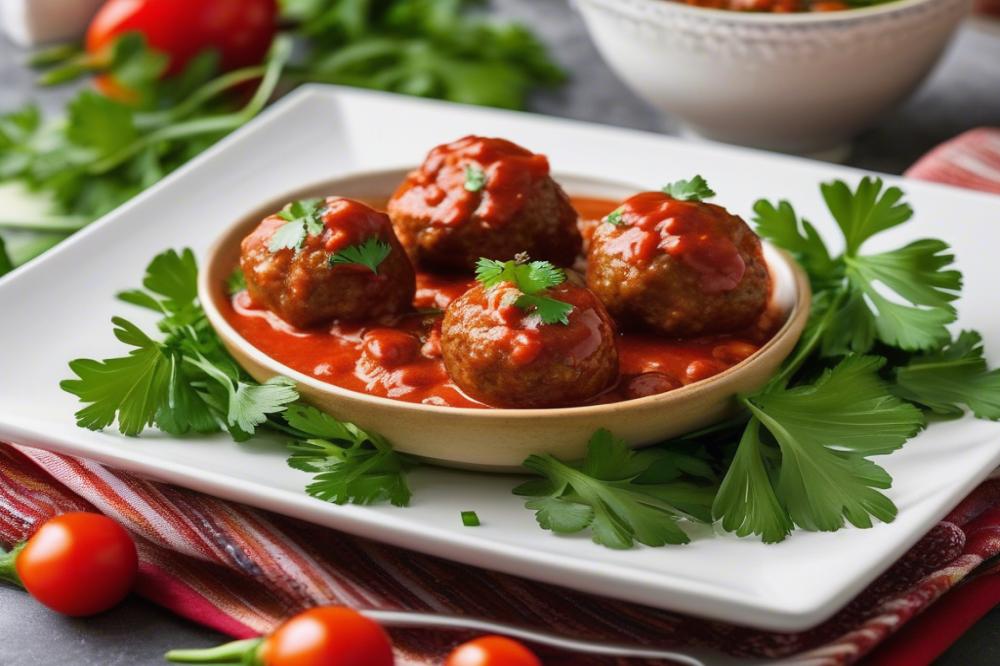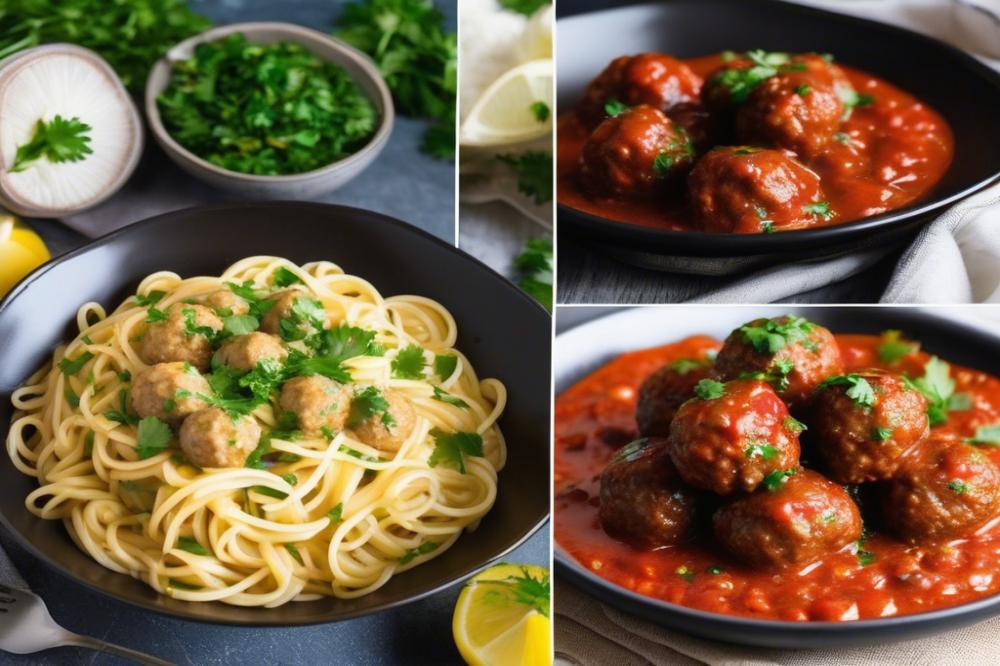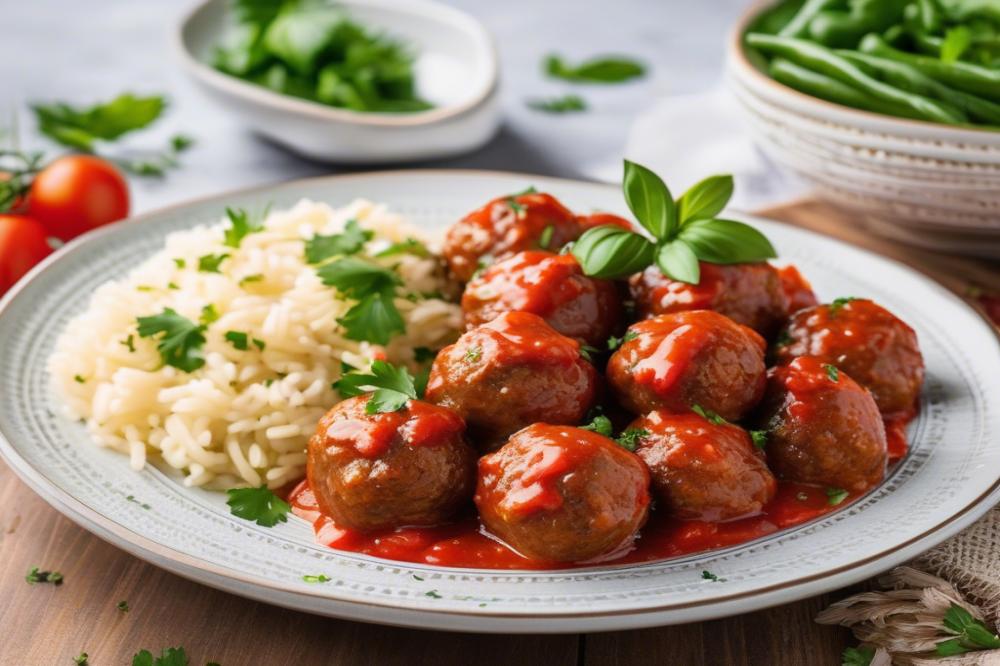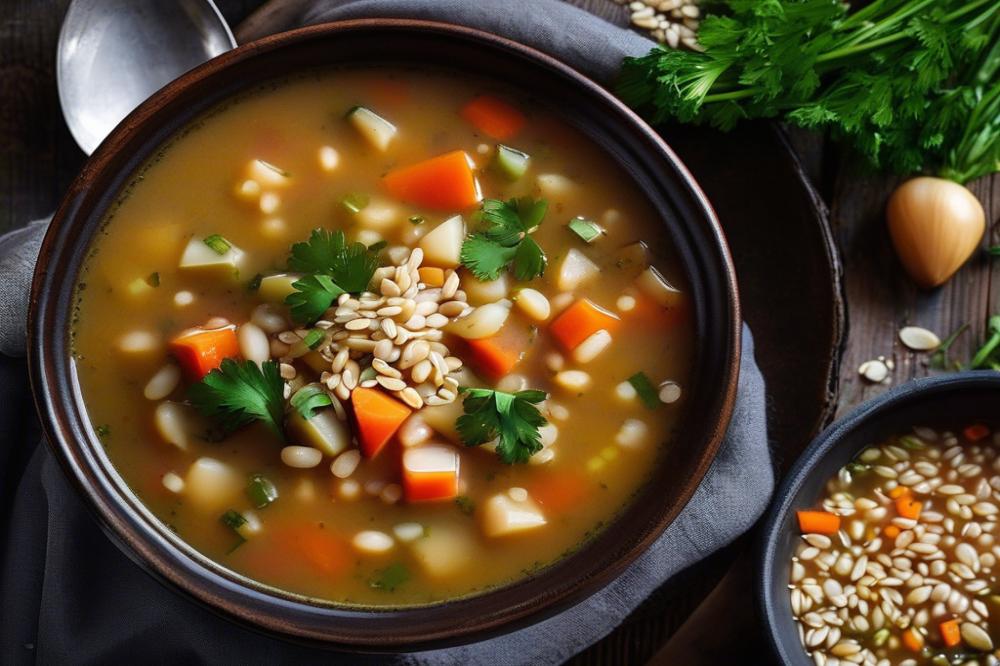The Secrets to Cooking Authentic Soutzoukakia meatballs in Sauce
When it comes to Greek cuisine, few dishes evoke the same warmth and comfort as Soutzoukakia. This beloved recipe features savory meatballs, traditionally made from ground meat, nestled in a rich tomato sauce. It has roots deeply planted in history, showcasing the essence of Mediterranean diet principles. Cooking these meatballs is not just about feeding the body but about nurturing the soul.
Traditional recipes play a vital role in preserving the flavors of home-cooked meals. With each family possessing its special version, the joy of preparing these meatballs lies in the shared experiences and cherished memories that come with them. Carefully selected spices and fresh herbs elevate the taste of this dish, melding together to create a harmony of flavors that delight the senses.
The process of making Soutzoukakia is an adventure in itself. The technique fosters pride, while the attention to detail can transform simple ingredients into something extraordinary. Understanding the methods used in traditional cooking can lead to authentic flavors that truly reflect the heart of Greece. Whether it is a family gathering or a simple weeknight dinner, these meatballs serve as perfect comfort food, embodying the love and warmth that comes from the Mediterranean kitchen.
Exploring the right ingredients is crucial in achieving the authentic taste. A careful combination of ground meat, herbs, and spices not only contributes to the overall flavor but also adds character to the dish. As you embark on your cooking journey, remember that the meal prepared with care will bring happiness not just to you, but to everyone who shares it around the table.
The Secrets to Cooking Authentic Soutzoukakia

Originating from Greece, Soutzoukakia are more than just meatballs. Their history reflects the influence of various cultures throughout centuries. These delightful morsels serve as a testament to the country’s rich culinary heritage. Often enjoyed as comfort food, they blend ground meat with an array of spices and herbs, creating a dish that warms the heart. tomato sauce adds a vibrant touch, enhancing both flavor and tradition.
Culturally, this dish symbolizes family gatherings and home-cooked meals. Many families have their own variations, each recipe passed down through generations. The unique twist each region offers can greatly impact the taste. In some areas, you might find a hint of cinnamon, while others may favor garlic or even allspice. These subtle differences make every plate a true reflection of local taste.
In Greece, Soutzoukakia play a significant role in the Mediterranean diet. Using quality ingredients is essential for a hearty dish. Ground meat, typically beef or a mix with pork, is seasoned generously. Fresh herbs brighten the flavors, and a good splash of olive oil enhances richness. Traditional cooking methods often include baking, which allows the flavors to meld beautifully.
When preparing this dish, some cooking tips can help achieve authenticity. Start by carefully mixing the meat with spices to create a flavorful base. Shape the meatballs evenly for consistent cooking. Simmering them in tomato sauce not only improves taste but also keeps them moist. With a few tweaks and attention to detail, anyone can bring a slice of Greek culture to their table.
Regional influences extend beyond ingredients. Each locality may have its own serving style. In some places, Soutzoukakia are offered alongside rice or potatoes, while others enjoy them with fresh bread, ready to soak up the savory sauce. This versatility adds to the dish’s charm.
Ultimately, mastering this recipe requires a bit of passion and creativity. Embrace the spirit of traditional cooking, and don’t be afraid to experiment. Sharing these tasty meatballs with loved ones brings everyone together, making every meal a celebration of heritage and flavor.
Ingredients and Cooking Instructions

To create these flavorful meatballs, gather the following ingredients:
- 500g ground beef or lamb
- 1 small onion, finely chopped
- 2 cloves garlic, minced
- 50g breadcrumbs
- 1 egg
- 1 tsp ground cumin
- 1 tsp dried oregano
- Salt and pepper to taste
- Olive oil for frying
For the tomato sauce:
- 400g canned tomatoes (crushed or diced)
- 1 small onion, finely chopped
- 2 cloves garlic, minced
- 1 tsp sugar (optional)
- Salt and pepper to taste
- Fresh parsley for garnish (optional)
Preparation
Begin by preparing the meatball mixture. In a large bowl, combine the ground meat with the finely chopped onion, minced garlic, breadcrumbs, egg, cumin, oregano, and a pinch of salt and pepper. Mixing these ingredients by hand will help to blend the flavors effectively.
Shape this mixture into oblong meatballs. They should be about the size of an egg but slightly longer. This shape allows for even cooking and better absorption of the tomato sauce. Set them aside as you work on the sauce.
Cooking the Meatballs
Heat a generous amount of olive oil in a large skillet over medium heat. Once the oil is shimmering, gently place the meatballs in the pan. Be careful not to overcrowd the skillet; otherwise, they will steam rather than fry. Allow them to brown on all sides, which adds depth of flavor.
Once browned, remove the meatballs from the skillet and place them on a plate lined with paper towels to absorb excess oil. This step is crucial for maintaining a good texture.
Making the Tomato Sauce
In the same skillet, add a little more olive oil if needed and sauté the chopped onion until translucent. Add the minced garlic and cook for another minute, stirring frequently to prevent the garlic from burning.
Pour in the crushed or diced tomatoes. Stir in the sugar if you prefer a slightly sweeter sauce. Season with salt and pepper. Let this simmer for about 10 minutes so that the flavors meld. The aroma will fill your kitchen and invite comfort.
Combine Meatballs and Sauce
After simmering, gently add the meatballs back into the sauce. Cover the skillet and let them cook in the sauce for an additional 20 minutes over low heat. This step infuses the meatballs with the rich tomato flavor and keeps them moist.
Before serving, taste the sauce and adjust the seasoning if necessary. Garnish with fresh parsley if desired. These meatballs reflect the heart of Greek cuisine and will make a delightful addition to your Mediterranean diet.
Nutritional Information

As we delve into the nutritional aspects of this beloved dish from Greek cuisine, it’s important to recognize the health benefits associated with each ingredient. The base of any meatball dish typically involves ground meat. This provides a substantial source of protein. Protein is essential for muscle repair and overall growth. Different meats, such as beef or lamb, vary slightly in fat content and flavor.
Spices and herbs play a major role in creating that special taste. Common choices include garlic, oregano, and cumin. Garlic is known for its health benefits, including supporting cardiovascular health and providing anti-inflammatory properties. This makes Soutzoukakia not only tasty but also a nutritious option.
Tomato sauce serves as a critical component in the dish. It adds richness and acidity, enhancing flavor while providing vitamins such as vitamin C and potassium. The lycopene found in tomatoes is also linked to various health benefits, such as improved heart health. Combining these elements creates a sauce that is both comforting and good for you.
Healthy fats are another essential aspect of the Mediterranean diet. When cooking, one often uses olive oil, which is a staple in traditional cooking. Olive oil is rich in monounsaturated fats, known for reducing inflammation and lowering the risk of heart disease. This healthy fat balances the meal well, especially when paired with lean meat and lots of vegetables.
Carbohydrates are present mainly in the form of side dishes. While rice or bread are common accompaniments, one can include whole grain options. Whole grains offer fiber, which aids digestion and promotes a feeling of fullness. This balance of protein, healthy fats, and carbohydrates creates a satisfying meal that won’t weigh you down.
When considering the structure of your recipe, keep in mind the sources of nutrients you are working with. This meal can fit seamlessly into the Mediterranean diet, which is celebrated for its emphasis on fresh ingredients and balanced nutrition. Avoiding processed foods will not only enhance flavor but will also increase health benefits.
Cooking tips to maintain these nutritional qualities include opting for leaner varieties of ground meat and using fresh herbs. This approach enhances the flavor while keeping saturated fat in check. Enjoying traditional comfort food doesn’t have to mean sacrificing health. Thoughtful preparation allows for a delicious dish that supports a balanced lifestyle.
Traditional Cooking Techniques

Preparing Soutzoukakia requires a few essential cooking methods. Frying is the first step to create a crispy outer layer. Use a deep skillet with enough oil to cover the bottom. Heat the oil until it shimmers, then carefully place the meatballs in the pan. Allow them to brown on one side before flipping. The goal is a rich, golden color that adds depth to the dish.
After frying, simmer the meatballs in a rich tomato sauce. Choosing ripe tomatoes or high-quality canned ones can really enhance the flavor. Start by sautéing onions and garlic in olive oil to release their aromas. Adding spices such as cinnamon and allspice gives the sauce that distinctive taste. Letting the sauce bubble gently with the meatballs creates a cozy, comforting aroma.
Using fresh herbs makes a remarkable difference in any recipe. Parsley, dill, and mint are popular in Greek cuisine. They can be chopped and sprinkled into the sauce just before serving. This adds brightness and freshness to the dish. Dried herbs can also work well, but fresh ones bring a lively burst of flavor to every bite.
To elevate the flavors further, think about layering ingredients. For instance, adding a splash of red wine to the sauce can bring out sweetness in the tomatoes. Similarly, a pinch of sugar might help balance acidity, enhancing the overall taste. Remember that flavors develop more as the dish cooks, so patience is key.
While traditional cooking techniques are important, your personal touch can elevate comfort food. Experiment with different spices or even ground meat types. Some enjoy a mix of lamb and beef, while others stick to a single kind. Each variation brings a different flavor profile to the table.
Lastly, part of the charm lies in sharing the meal. Serve Soutzoukakia with a side of rice or crusty bread to soak up the delicious sauce. Gathering around the table to enjoy this dish is an invitation to experience heritage through food.
Serving Suggestions and Pairings
When it comes to enjoying Soutzoukakia, the right sides can truly elevate the experience. Traditional Greek cuisine often emphasizes balance and freshness, so consider pairing these delicious meatballs with an array of comforting sides. A simple, fluffy rice is a popular option, soaking up the rich tomato sauce beautifully. Alternatively, warm, crusty bread mesmerizes as it becomes the perfect tool for sopping up every last drop of sauce.
A fresh salad can add a crisp contrast to the meatballs. Toss together some crunchy cucumbers, ripe tomatoes, and red onions drizzled with olive oil and lemon juice. Simple herbs like parsley or dill can enhance the flavors even more. This combination not only pleases the palate but also fits well into the Mediterranean diet.
Various regional twists exist for recipes in Greece. In some areas, the meatballs might be served with a side of roasted potatoes, offering a hearty and homey touch. In other regions, a light tzatziki sauce can accompany the dish, cooling down the spices and adding creaminess. This sauce, made from yogurt, cucumbers, and garlic, complements the spices used within the meatballs.
When it comes to presentation, keeping the dish inviting is key. Arrange the meatballs on a vibrant serving platter, topped with fresh herbs for a pop of color. Small bowls of sides can also create an engaging spread. You might even consider using traditional ceramic dishes for an authentic feel.
Whether you choose to serve with rice, salad, or bread, think about the flavors you want to highlight. Comfort food like this is about pleasure and community. Eating together makes for memorable moments, encouraging conversations and shared experiences around the table.
The Role of Soutzoukakia in Greek Cuisine
In Greek culture, certain dishes hold a special place in the hearts of families. Soutzoukakia, those flavorful meatballs simmered in a rich tomato sauce, are one such dish. Many people consider this comfort food, a meal that brings warmth and joy to any gathering. Ground meat serves as the base, infused with spices and herbs, creating a delicious experience that resonates with tradition.
Family gatherings often feature this hearty dish. It commonly appears on special occasions, like birthdays and holidays. Love and effort go into every recipe created, as generations pass down their cooking tips. People believe that savoring Soutzoukakia together strengthens bonds. The Mediterranean diet plays a significant role in these meals, emphasizing fresh ingredients and shared experiences.
Everyday meals also embrace this delightful plate. Whether served with rice or crusty bread, the combination creates a satisfying feast. In homes across Greece, you can imagine families enjoying this dish after a long day. Children often cherish the taste, and parents are happy to see them clean their plates.
Celebrations become even more memorable with this dish gracing the table. The aroma of slow-cooked tomato sauce and seasoned meat fills the air, creating an inviting atmosphere. Some cooks may even add variations to the recipe, showcasing their creativity while remaining true to tradition. Each bite tells a story, a connection to countless meals shared over the years.
In many ways, Soutzoukakia represents the essence of Greek cuisine. It captures the notion of hospitality, where serving food becomes an expression of love. This dish is more than just a name; it symbolizes warmth, family, and the joy found in shared moments. With every homemade batch, people celebrate their heritage, keeping culinary traditions alive.
Bringing It All Together
The key points about making authentic Soutzoukakia revolve around both technique and tradition. Incorporating ingredients like garlic, bread, and aromatic spices is essential for capturing the dish’s rich flavor. Cooking the meatballs until they are golden brown guarantees a delightful texture, which pairs perfectly with a savory tomato sauce.
Crafting this delicacy invites you to explore the depths of Greek cuisine. The process might seem demanding at times, but the end result is certainly worth the effort. Imagine the satisfaction you’ll feel when serving this dish. Sharing such a meal with family and friends creates moments that last a lifetime. Everyone enjoys a hearty meatball, especially when it showcases a culture’s legacy.
Take the plunge and try this delightful recipe. As you blend flavors and cook with passion, you’ll appreciate what makes this dish remarkable. Family gatherings will transform, and you will impress your guests with a taste of Greece. After all, every bite tells a story of tradition and love.



